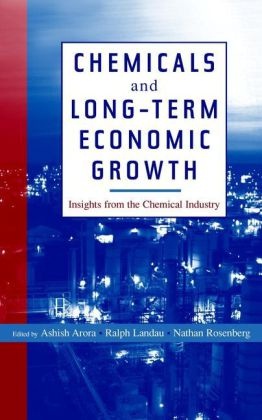Read more
Informationen zum Autor ASHISH ARORA , PhD, received his PhD in economics from Stanford University in 1992 and is currently Assistant Professor of Economics and Public Policy at the Heinz School, Carnegie Mellon University, Pittsburgh. His research focuses on the economics of technological change, management of technology, and technology policy. RALPH LANDAU , ScD, was the cofounder, in 1946, and CEO of Halcon-Scientific Design Group, a prominent innovator in the chemical industry. He is a consulting professor of economics at Stanford University and a Research Fellow at Harvard's Kennedy School. In 1985, he received the National Medal of Technology. He has also received the Perkin Medal (1981) and the Othmer Medal (1997). He was recently named one of Chemical & Engineering News' Top 75 Contributors to the Chemical Enterprise. He has published numerous works dealing with technology, economic growth, and innovation. NATHAN ROSENBERG , PhD, Fairleigh S. Dickinson, Jr. Professor, has been Professor of Economics at Stanford University since 1974. His research has dealt primarily with the economics of technological change and the relationships between scientific research and changes in technology. His books include Perspective on Technology, Inside the Black Box, Technology and the Pursuit of Economic Growth (with David Mower), Exploring the Black Box, and How the West Grew Rich (with L. E. Birdzell). In 1996, he was awarded the Leonardo da Vinci Prize by the Society for the History of Technology. Klappentext Wirtschaft und Management: Was kann man aus der Entwicklung der chemischen Industrie lernen? Dieses informative Buch erläutert wichtige Aspekte in systematischer Weise. Wettbewerbsvorteil und Wachstum werden vom historischen und vom geographischen Standpunkt aus untersucht. Gezeigt wird, wie sich neue Technologien herausbildeten und wie sich die organisatorischen Strukturen im Laufe der Jahrzehnte veränderten. Viele Schlußfolgerungen lassen sich auf andere Industriezweige übertragen. Zusammenfassung The chemical processing industry is the largest manufacturing industry in the United States and Europe. This book focuses on lessons learned from the development of this industry and how to apply them to promote long-term economic growth. Inhaltsverzeichnis ORGANIZATION AND PURPOSE. Introduction (A. Arora, et al.). COUNTRY OVERVIEWS. On the Making of Competitive Advantage: The Development of the Chemical Industries of Britain and Germany Since 1850 (J. Murmann & R. Landau). Chemicals: A U.S. Success Story (A. Arora & N. Rosenberg). The Japanese Puzzle (T. Hikino, et al.). INNOVATION AT THE HEART OF THE INDUSTRY. The Process of Innovation in the Chemical Industry (R. Landau). The Impact of the Legal System on Innovation (T. Campbell & R. Landau). Technological Change in Chemicals: The Role of University-Industry Relations (N. Rosenberg). SURVEYING THE LEVELS OF THE MATRIX. The Industry Evolves Within a Political, Social, and Public Policy Context: A Brief Look at Britain, Germany, Japan, and the United States (M. Horstmeyer). Monetary, Fiscal, and Trade Policies in the Development of the Chemical Industry (B. Eichengreen). Finance and the Chemical Industry (M. Da Rin). Structure and Performance of the Chemical Industry under Regulation (K. Esteghamat). Evolution of Industry Structure in the Chemical Industry (A. Arora & A. Gambardella). The Evolution of Corporate Capability and Corporate Strategy and Structure Within the World's Largest Chemical Firms: The Twentieth Century in Perspective (A. Chandler, et al.). THE MODERN CHEMICAL INDUSTRY AND CORPORATE GOVERNANCE. Connecting Performance and Competitiveness with Finance: A Study of the Chemical Indus...

